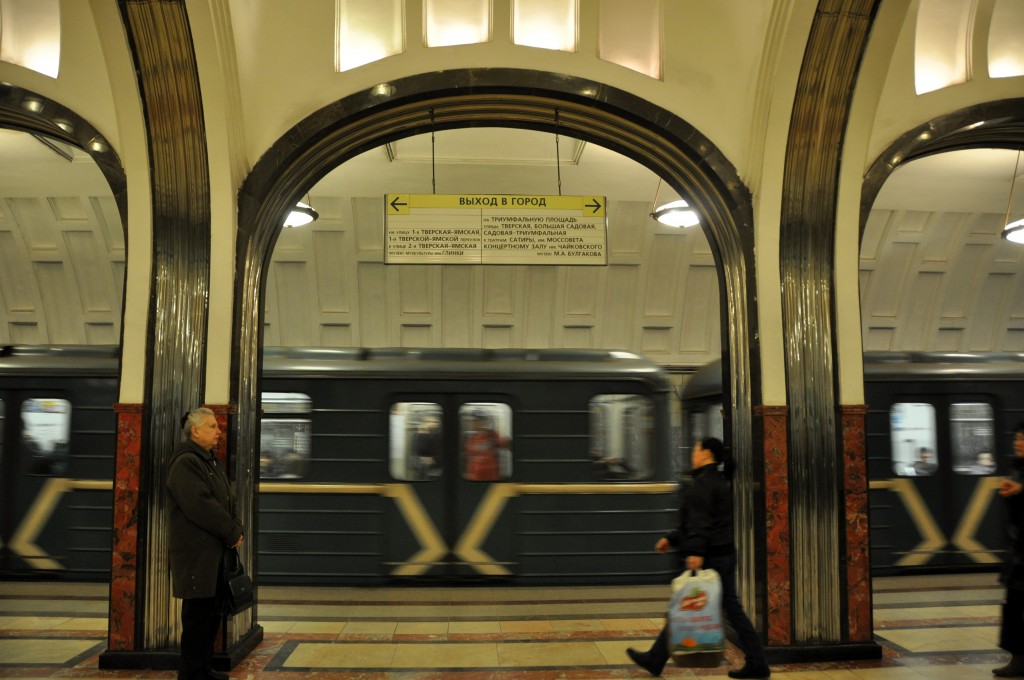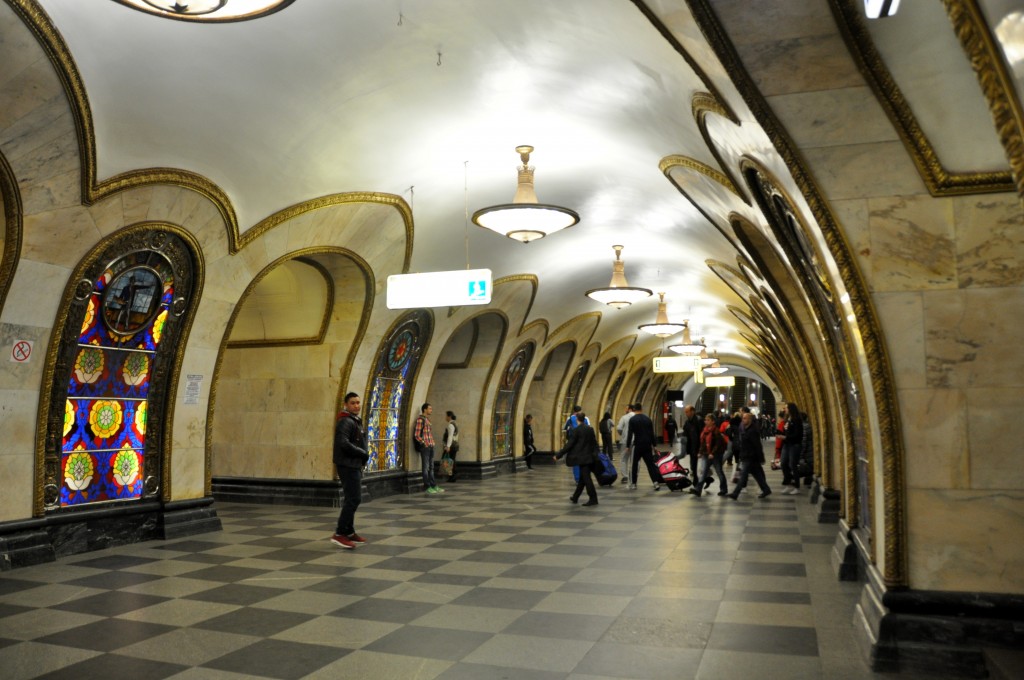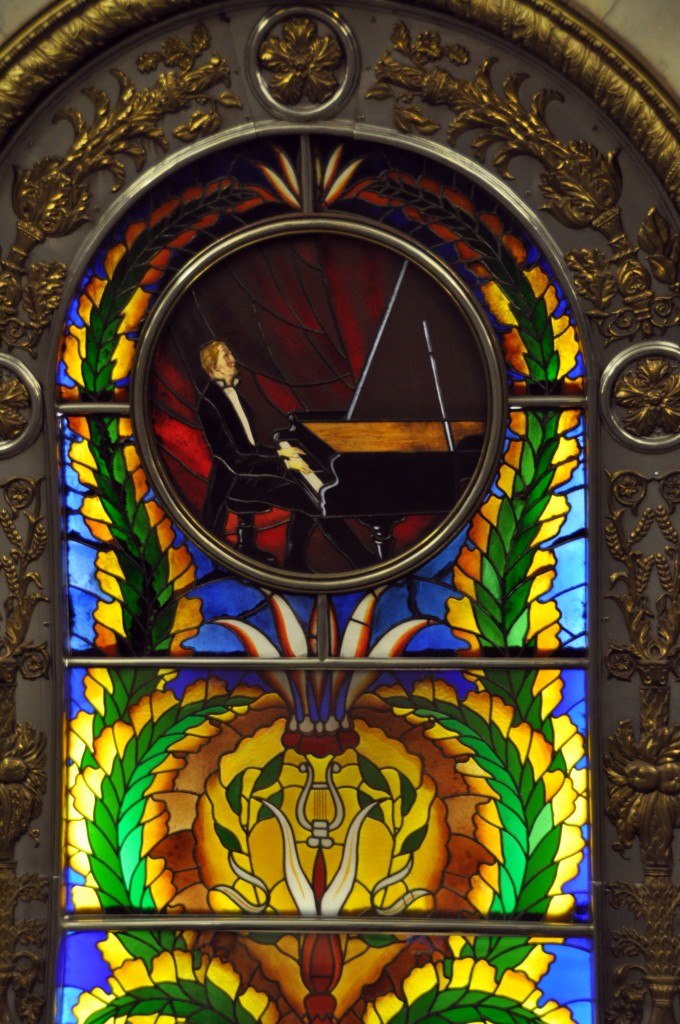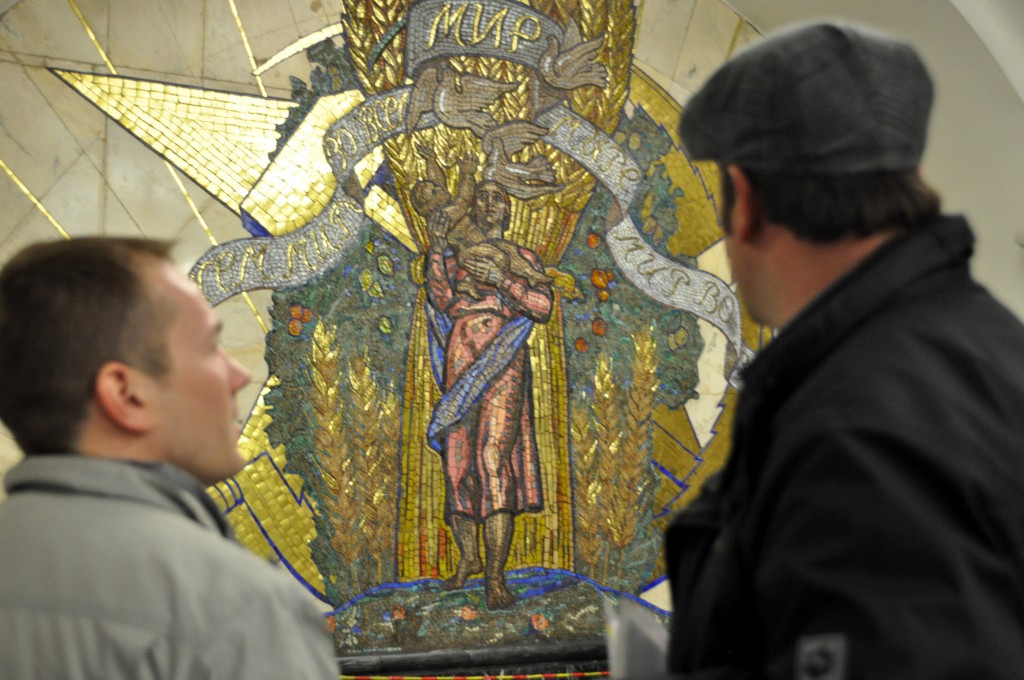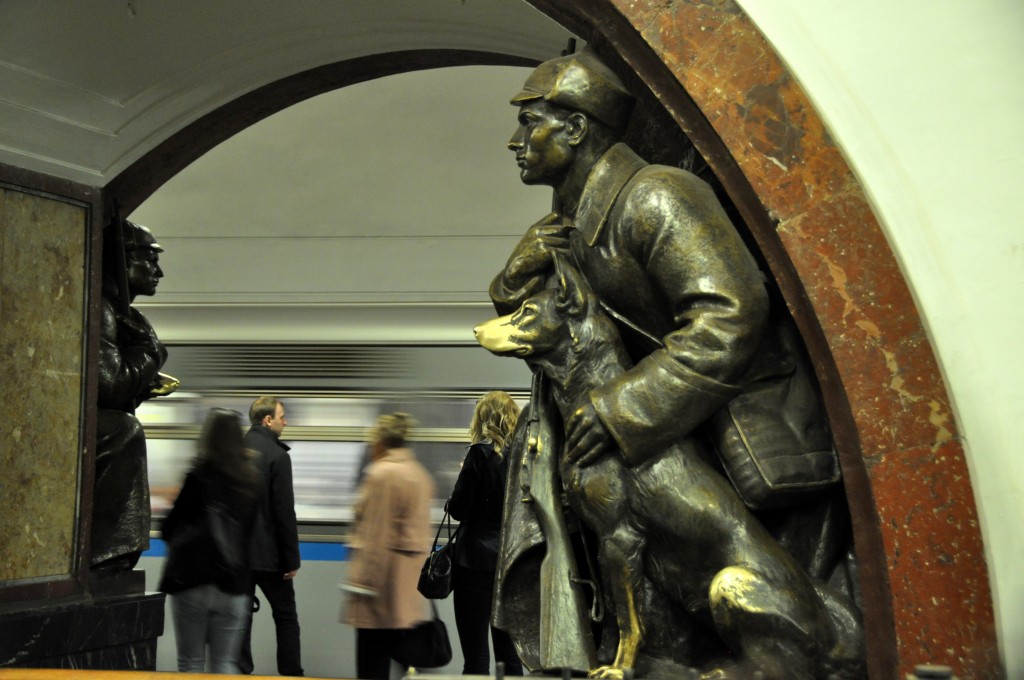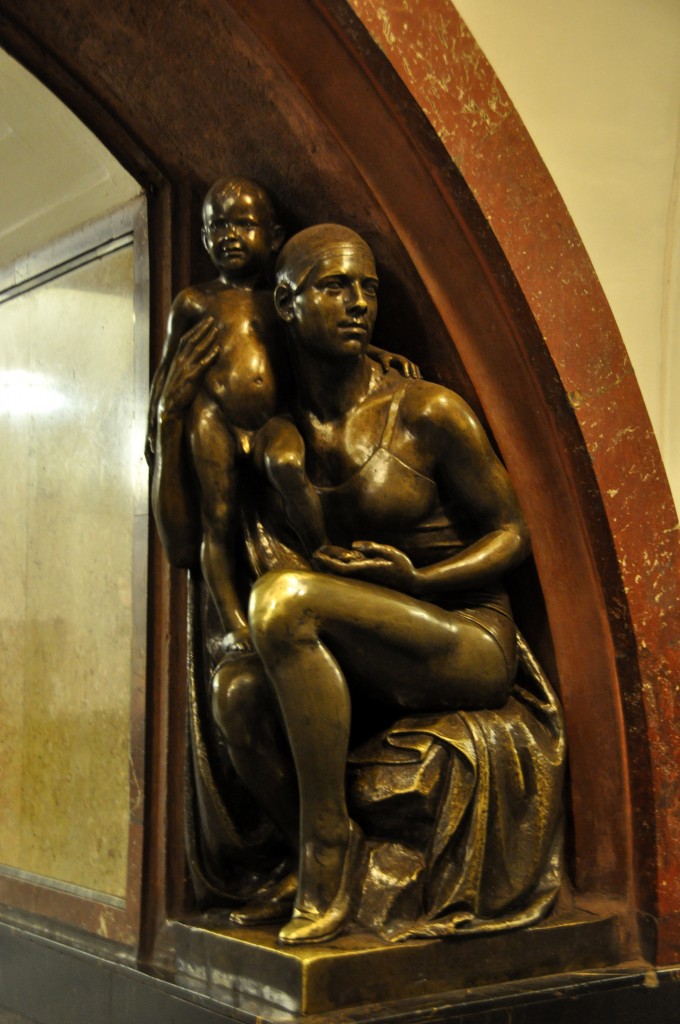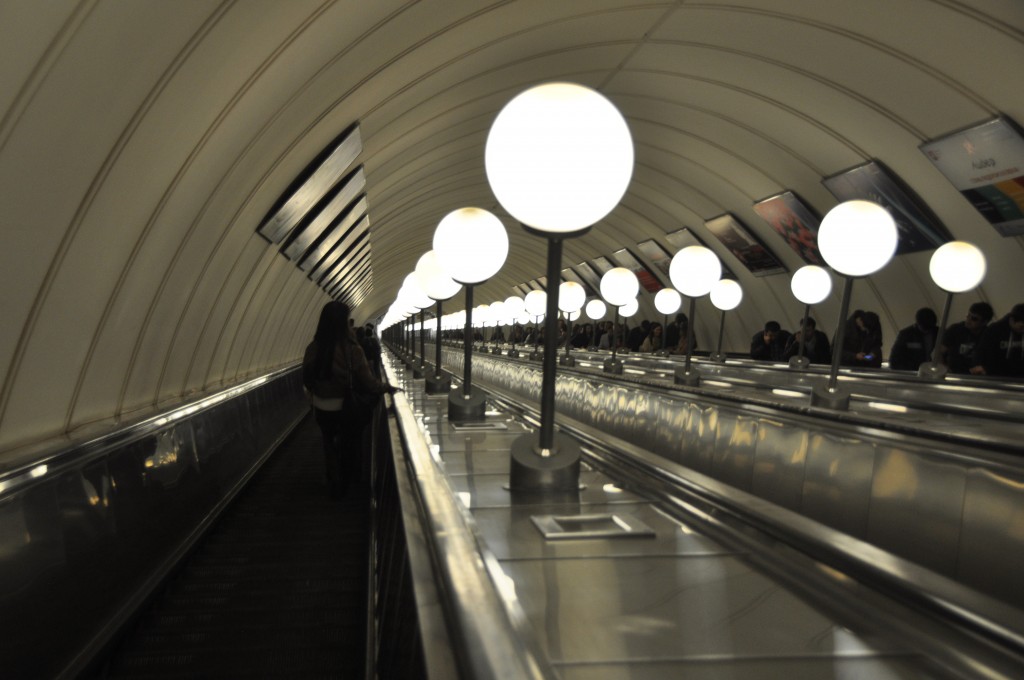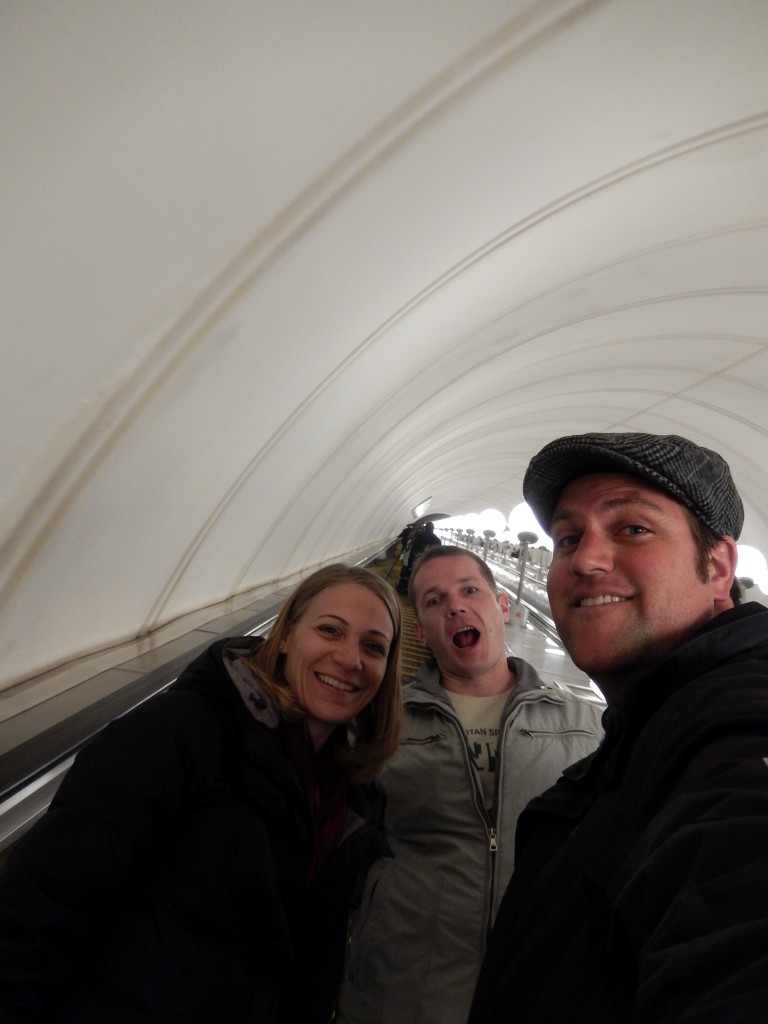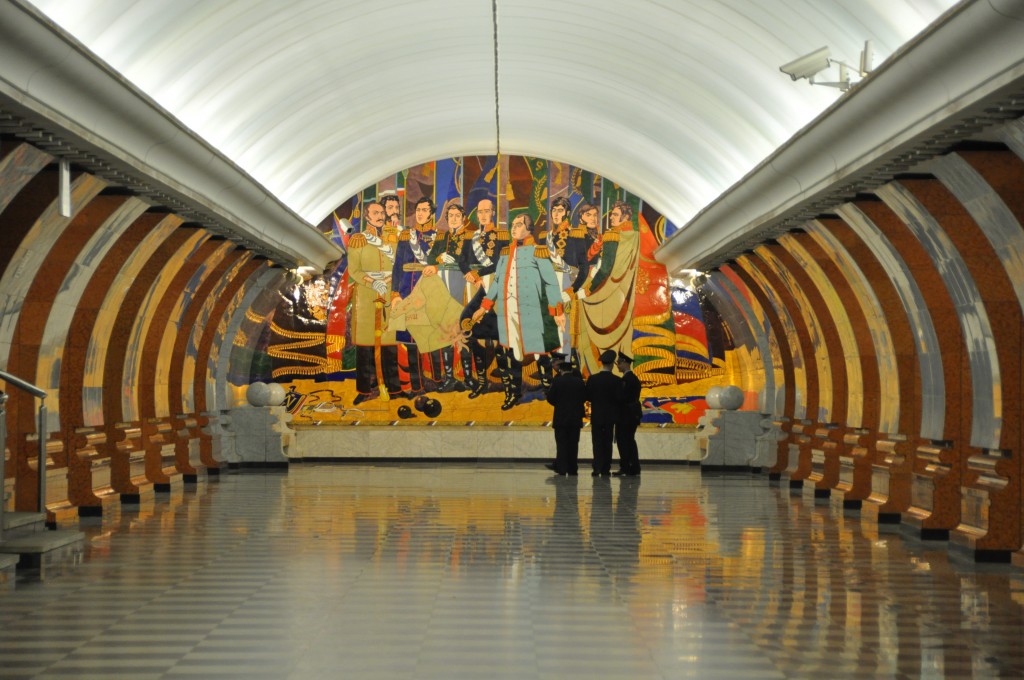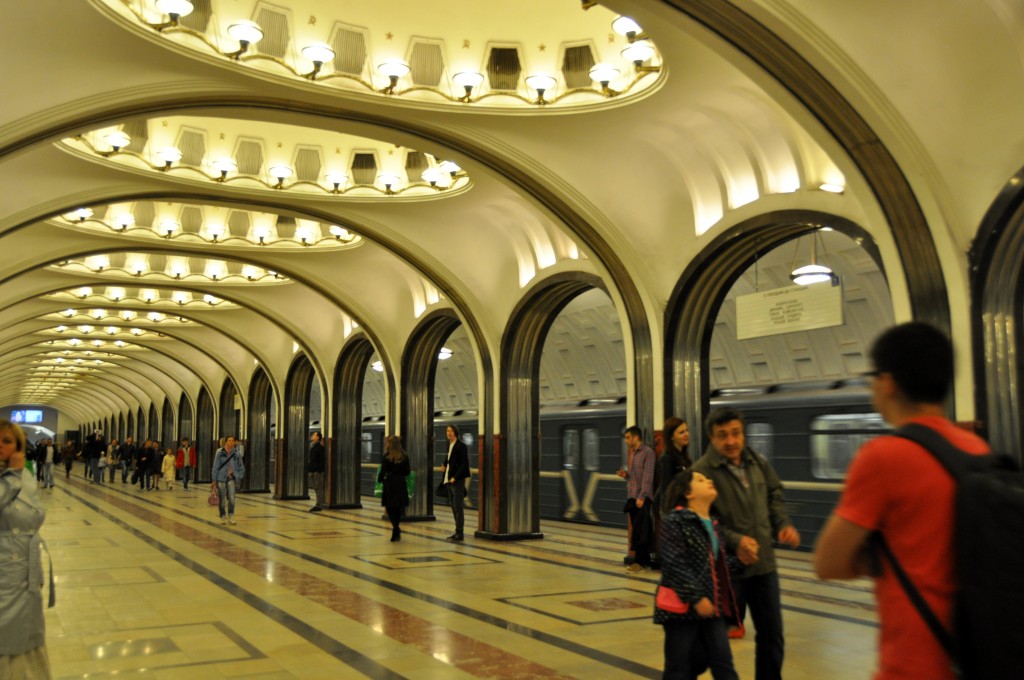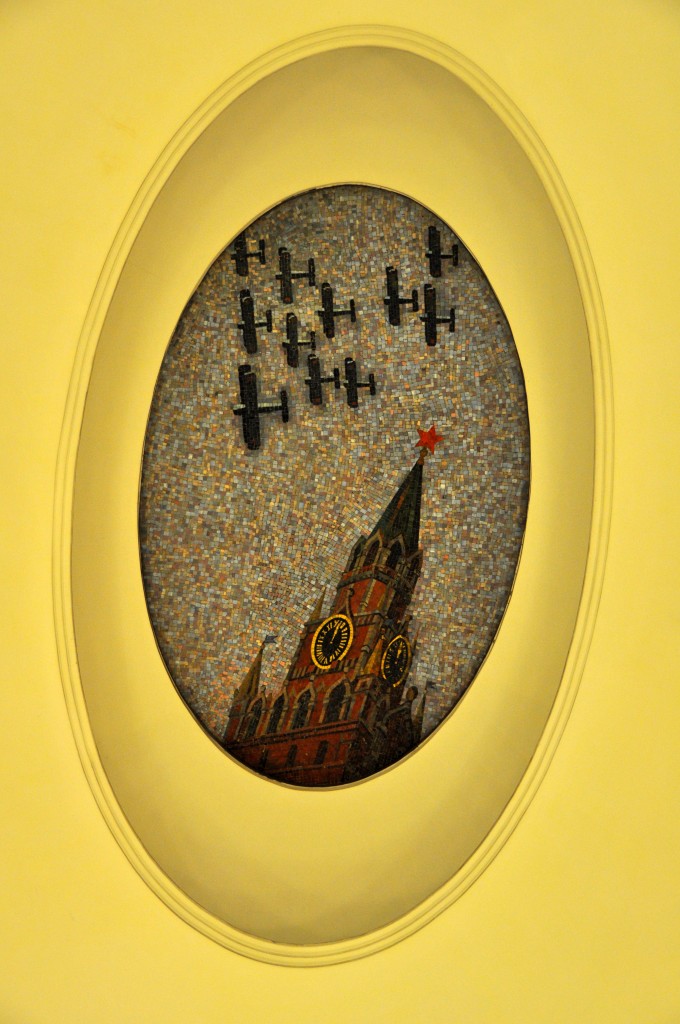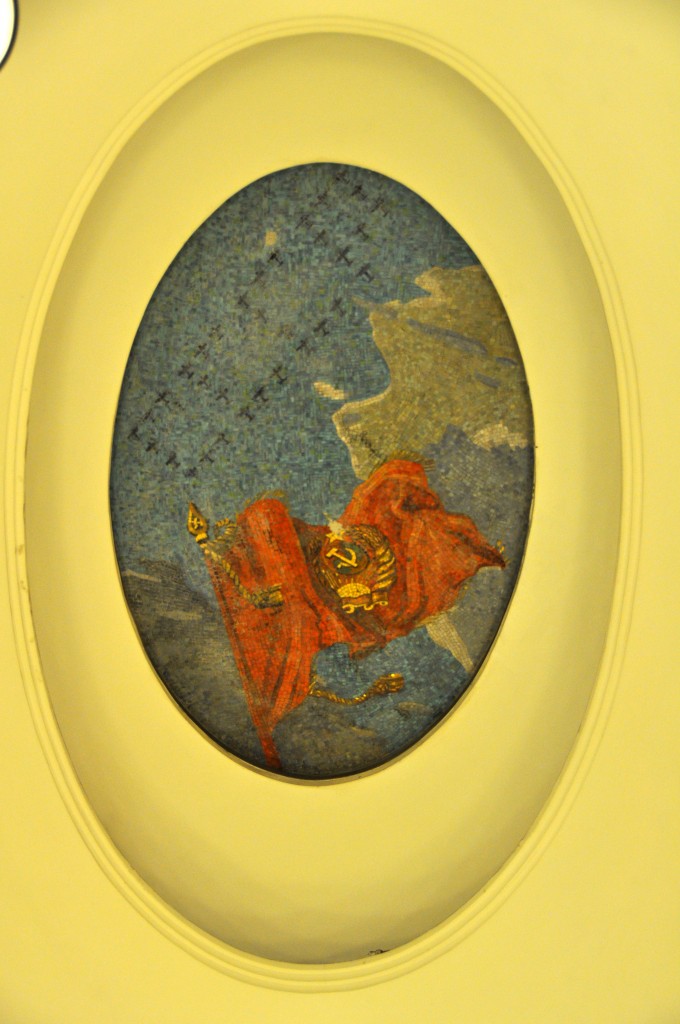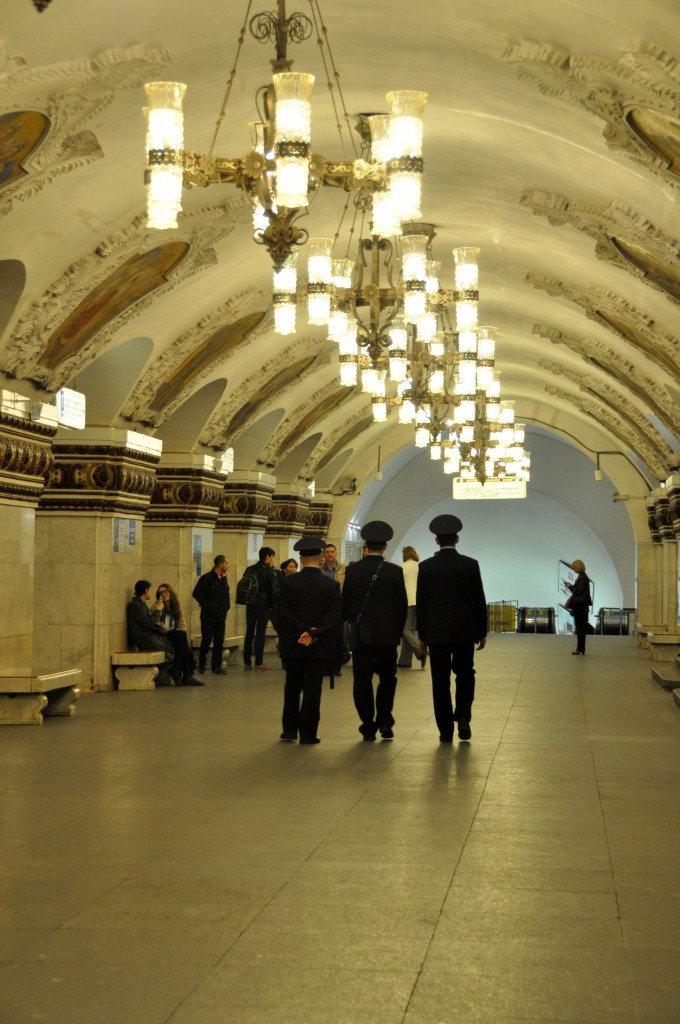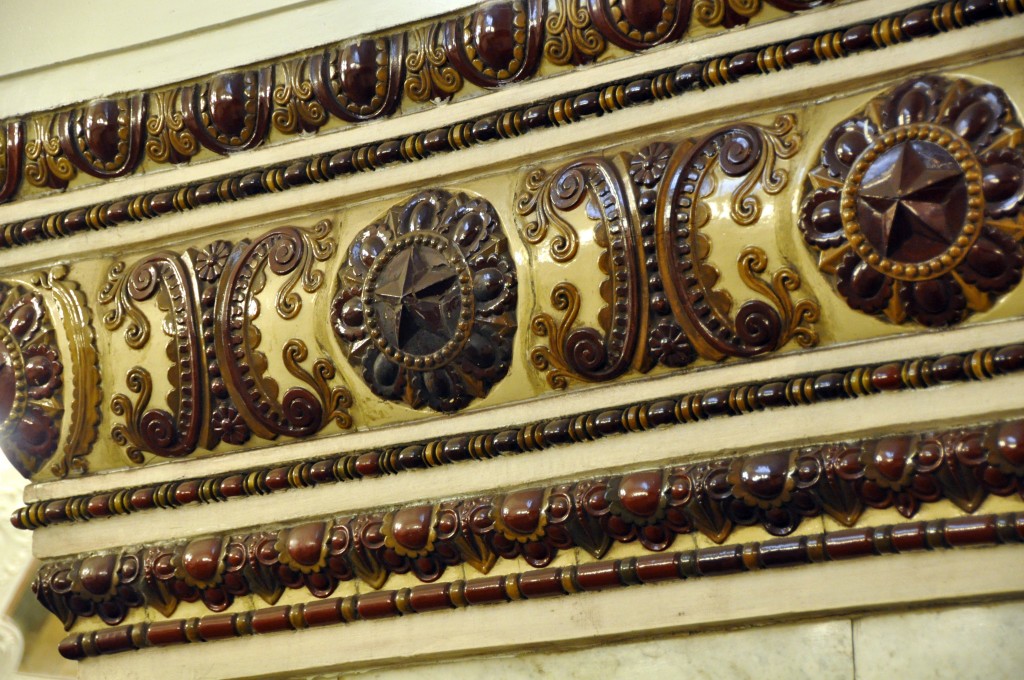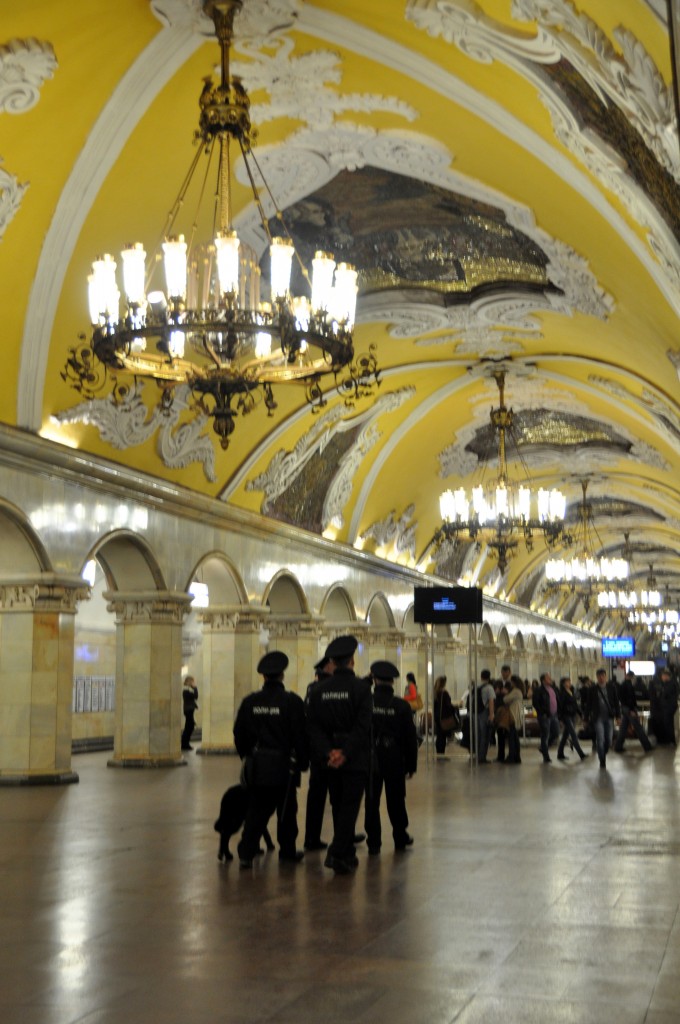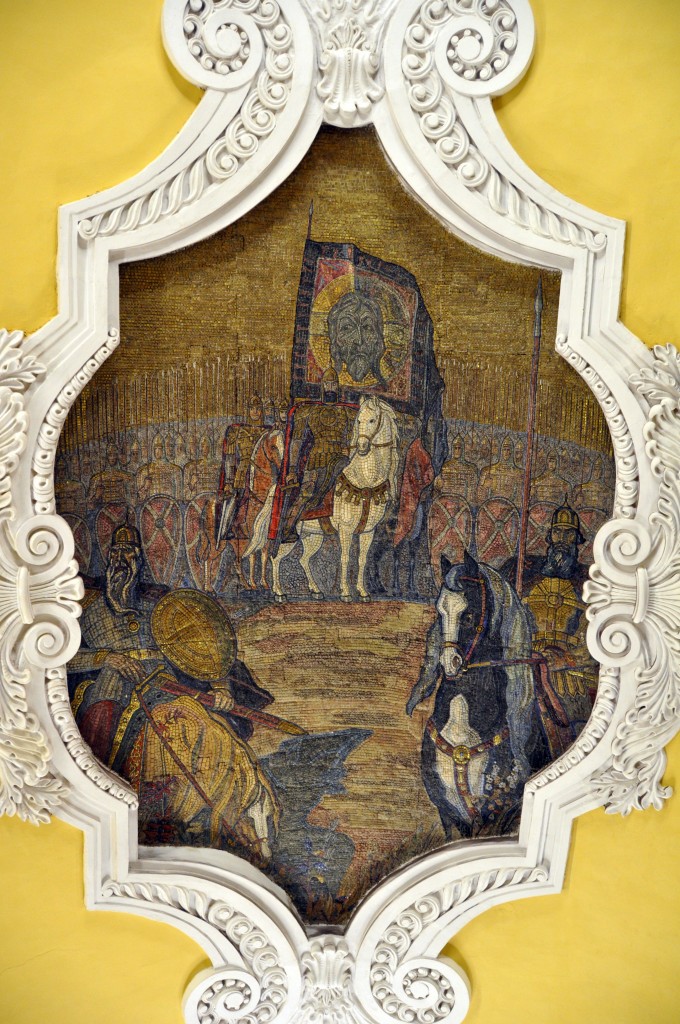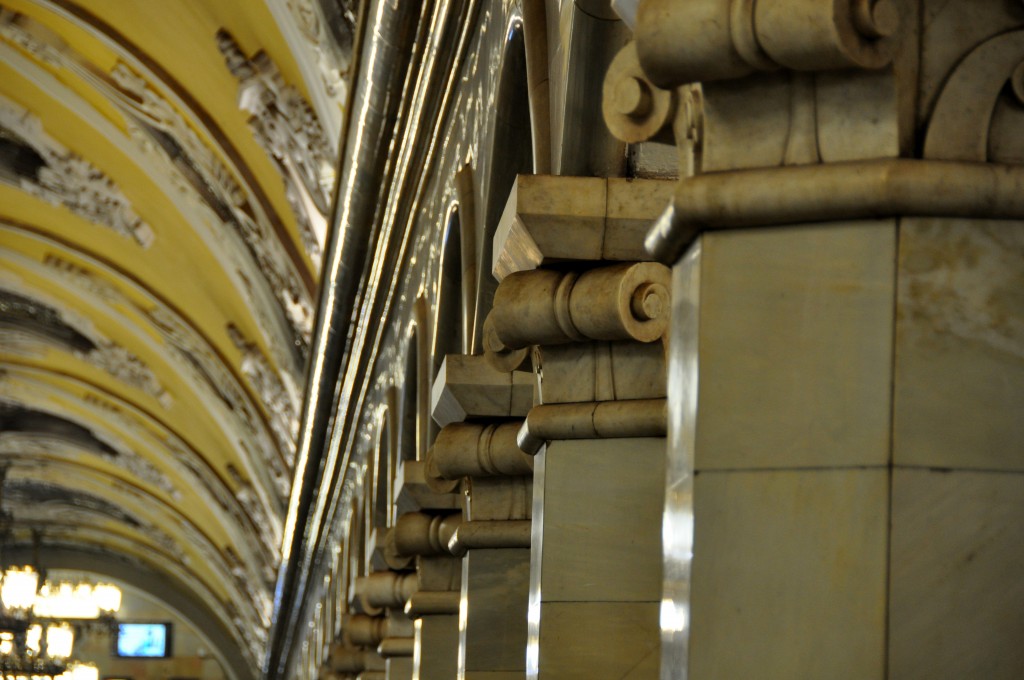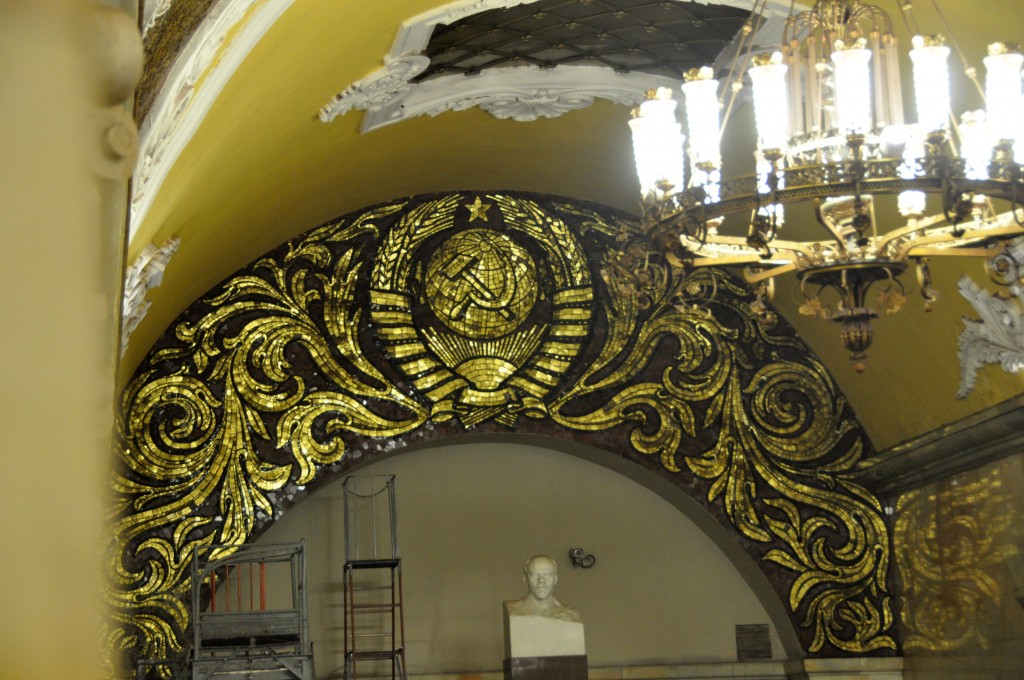More than nine million people ride the Moscow Metro every day. That is more than in NYC and London combined, and about half of the city’s population! Construction began in the 1930’s by Stalin as an attempt to make the people happy. The city’s populace didn’t exactly have the easiest of lives (and it wasn’t going to get better any time soon) and most of them were extremely poor. So, Stalin decided that the best way to make the greatest number of people “happy” and “feel rich” was to create a decadent and marvelous public transportation system. Through gritted teeth, I guess one could say that the metro was the one nice thing that Stalin left behind.
Joe is always the logistical half of our travel plans. He was well prepared to get us from the airport to our hotel via three trains. It was a solid plan…until we actually arrived. You see, all of the preparatory information that can be gathered about the metro system is clear and helpful…and written using the Latin alphabet. However, all of the signage used within the actual metro system (on the trains, on the walls, throughout the stations) is written using Cyrillic. Hello!! Huge problem!!
Joe did an amazing job! He did some rapid letter-by-letter Cyrillic-to-Latin translations, some internal compassing, some random guessing and we were off in no time!! And I? Well I just followed behind like a lost lamb. This is what makes us a great pair! 😉
The greatest part about the metro is that a ticket only costs $1.10! So, we spent an evening roaming around the stations, being tourists, and feeling pretty good about our economical entertainment. Here are just a few of the best stations in Moscow’s metro! I’ll stick to the Latin names…to keep things simple!!
Novoslobodskaya – This station is home to thirty-two stained-glass panels which depict the “intellectual” professions: architect, geographer, agronomist, engineer, artist and musician.
At the far end of the hall is a mosaic titled Peace in the Whole World. The doves are not original. They replaced a portrait of Stalin during de-Stalinization.
Ploshchad Revolyutsii – This station is filled with bronze statues representing the roles that people played during the revolution: carrying out and protecting the revolution, industry agriculture, hunting, education, sport and child rearing. This was the station by the Red Square, so we were there pretty often. It was freezing cold every single time.
Park Pobedy – This is the deepest metro station and supposedly has the longest escalators in the world.
There are two beautiful panels on each end of the hall that depict their war-time victories of 1812 and 1945.
Mayakovskaya – This was Joe’s favorite station. Inside each of the light wells are mosaics titled 24 Hours in the Land of the Soviets. This station is also really deep, which resulted in it being used as an air raid shelter during WWII.
Kievskaya – This station is filled with frescos that embody the “idyllic Ukrainian existence”. Hmmm…I guess that can vary based on time and perspective!
Throughout all of the stations remain subtle pieces of propaganda. Sometimes they were blaringly obvious, sometimes well hidden amongst intricate décor. Even though Stalin wanted the repressed population to feel “happy” and “rich”, he didn’t want them to forget where they were.
Komsomolskaya – Named for the youth workers who built the first five metro stations, Komsomolskaya was my favorite station. With a beautiful yellow hall and stuccoed flourishes, this station features mosaics of Russian military heroes.
There you have it…a tiny glimpse of the most beautiful public transportation system in Europe!

